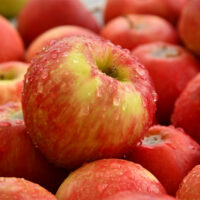Foods to eat and avoid for macular degeneration

Macular degeneration is a condition that deteriorates the center of the retina, resulting in compromised vision. There are two types of macular degeneration: wet and dry, both of which lead to loss of sight. However, wet macular degeneration also accompanies leaky blood vessels that grow under the retina as a symptom and impacts said condition. This article discusses foods to eat and avoid to relieve the symptoms associated with macular degeneration.
Foods to eat:
- Corn, carrots, collard greens, spinach, red peppers, and sweet potatoes
Colorful and pigmented vegetables are great for one’s overall health, but they’re especially recommended to protect the cells responsible for vision. Vegetables high in carotenoid should be one’s go-to option to maintain good vision and find relief from macular degeneration. - Berries, oranges, grapefruit, kiwi, and pineapple
Vitamin C is another potent source for good eye health. Apart from preventing vision loss, it also helps the body build collagen that helps build strong blood vessels in and around the eyes. This helps avoid the leaky blood vessels that tend to grow under the retina in case of wet macular degeneration. - Fish, nuts, and seeds
These foods are rich in omega-3 fatty acids, which can potentially lower the risk of developing macular degeneration and slow down the symptoms of the condition. Foods rich in omega-3 fatty acids, along with vitamin E, can reduce clogged blood vessels, making the appearance of the eyes and the skin around it much better.
Foods to avoid:
Foods that clog the blood vessels pose a high risk of macular degeneration, as the process can also damage the blood vessels in the eye. To find relief from macular degeneration, one must avoid the foods listed below.
- Processed foods
These foods are high in fats, sodium, and preservatives that can cause blood vessels and arteries to close up. This, in turn, can affect the blood vessels in the retina. - High-fat dairy
Dairy products high in fats can increase the intake of saturated fats in the body, causing arteries to narrow down and lower blood circulation. It can also contribute to excess weight, which puts pressure on blood vessels and slows down the blood flow. - Palm and coconut oil
These oils contain excess amounts of fatty acids as compared to other oils. The fatty acids contribute plenty of saturated fats that can narrow down the arteries and blood vessels.
Medication:
A complete eye exam determines the condition and stage of macular degeneration that helps doctors recommend the course of treatment. Some of the medications used to treat macular degeneration include bevacizumab (avastin), ranibizumab (lucentis), aflibercept (eylea), and brolucizumab (biovu).
These medications are injected into the eyes at regular intervals to recover vision and relieve the symptoms associated with macular degeneration.





